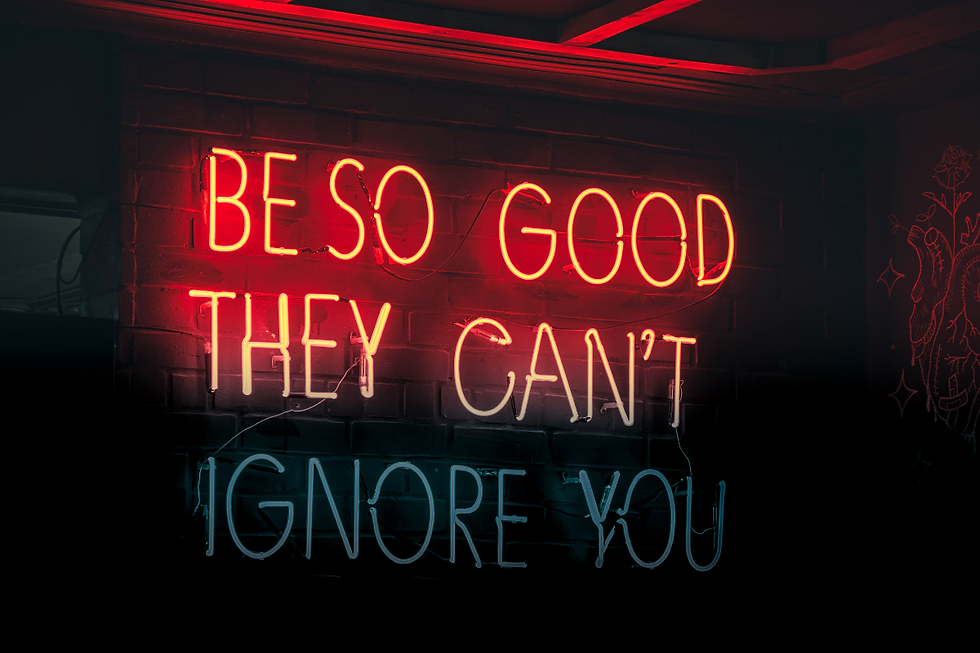CX - The retail X factor
- Juanita Neville-Te Rito

- Jun 18, 2015
- 3 min read

Shopping experiences are being transformed.
They are being altered by technology, and new expectations are being set by non-retail industry shakers such as Uber. All retailers should take heed of how shoppers are thinking and what they are thinking, feeling, saying and doing as a result.

There is an unprecedented complexity to shopper journeys, which can follow a different route each and every time. We self-navigate through shopping experiences and are just one swipe and a tap away from anything we want.
From our devices of choice, we browse, pin, tweet, buy, compare products and provide star ratings. Some retailers have found it tough to get their heads around the loss of control over a process they have traditionally managed.
The linear shopper journey no longer exists and today looks more like a pinball, pinging anywhere, anytime, on any device. But this is where exciting opportunities abound.
To make the most of these opportunities and connect with shoppers, retailers need to navigate a complex, content-rich world. To convert shoppers into loyal advocates, it takes more than traditional marketing strategies.
Start by throwing away the rule book as to what you should or shouldn’t do. There are many ways to connect and rich opportunities to develop two way relationships and deliver customer experience, also known as ‘CX.’
Neilsen online shopping data has confirmed what we already intuitively know. More than 655,000 Kiwis were shopping on their smartphones in 2014, as were 58 percent of tablet owners. Showrooming, whether friendly or hostile, has declined since 2013, dropping nearly 20 percent on smartphones. The good news for bricks and mortar? Webrooming, when online research leads to instore purchase, is happening for nearly one in four smartphone and tablet shoppers.

Yes, Kiwis have well and truly embraced online shopping. The expected projection for 2014 year end was $4.15 billion with a growing chunk of that total - $1.3 billion - spent on overseas websites.
Mobile devices aren’t just about transacting, they also play a considerable role in the path to purchase. Smartphones are constant companions to shoppers who are on the go whether in-store or in transit.

According to the latest GfK FutureBuy study, the top activities for shopping online, regardless of device are:
1. Searching for the best price
2. Finding products and services
3. Checking general product information
4. Making a purchase
5. Reading reviews.
We talk about creating omnichannel strategies but those words merely reflect our internal silos and are meaningless to shoppers. Customers don’t care about or think about channels. They do care about seamless, engaging, frictionless experiences, aka “Getting what I want how I want to, where I want to and when I want it.”

So, think about individual shopper touch points and how to reformulate these together around the shopper journey whenever, wherever and however the shopper wants to shop. This of course, changes based on the customer’s needs state. For example:
· Is it a rational or emotive purchase? “I need milk for breakfast,” vs. “I need new shoes because they will make me feel better.”
· What is my critical timeline? “I need milk for breakfast in the morning,” vs. “I need new shoes for a wedding I am attending in two weeks.”
Shoppers bounce in and out of need states and modes and still expect retailers to deliver a great experience, each and every time.
Retailers need to merge their offline and online to build excellent shopper experiences. Consider that 10 percent of Walmart’s online sales come from people who are in their stores at the time of purchase.
This video is an example of how some retailers haven’t got their thinking together and the less than optimal customer experience.
We all know a great app doesn’t make up for poor customer service. Effective campaigns can drive shoppers to websites only to be let down if it is hard to find the product or information they need.
Retailers need to start thinking differently.
Harness technology and shopper connectivity in the retail experience. Integrate the environment, online, customer service, delivery, supply chain, marketing, and product experience.
Retail leaders can write their own rule books by doing things differently and creating frictionless, engaging, relevant customer experiences, keeping the art of shopping alive. And deliver advocacy beyond reason.
P.S Macy’s are leading the way in this thinking.




Comments